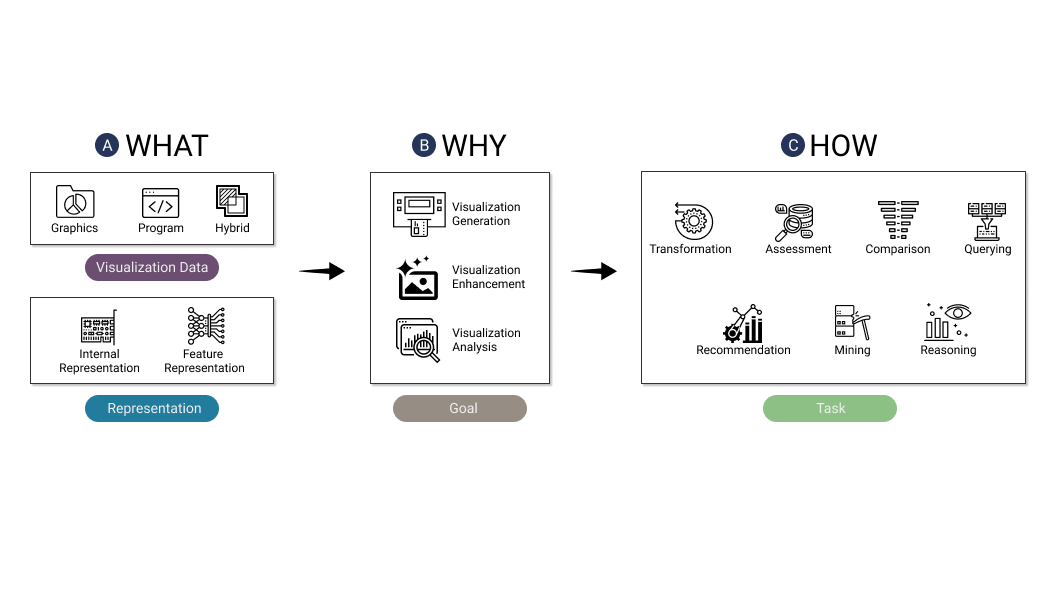AI4VIS: Survey on Artificial Intelligence Approaches for Data Visualization
Aoyu Wu, Yun Wang, Xinhuan Shu, Dominik Moritz, Weiwei Cui, Haidong Zhang, Dongmei Zhang, Huamin Qu
View presentation:2022-10-20T14:00:00ZGMT-0600Change your timezone on the schedule page
2022-10-20T14:00:00Z

Prerecorded Talk
The live footage of the talk, including the Q&A, can be viewed on the session page, ML for VIS.
Fast forward
Keywords
Survey; Data Visualization; Artificial Intelligence; Data Format; Machine Learning
Abstract
Visualizations themselves have become a data format. Akin to other data formats such as text and images, visualizations are increasingly created, stored, shared, and (re-)used with artificial intelligence (AI) techniques. In this survey, we probe the underlying vision of formalizing visualizations as an emerging data format and review the recent advance in applying AI techniques to visualization data (AI4VIS). We define visualization data as the digital representations of visualizations in computers and focus on data visualization (e.g., charts and infographics). We build our survey upon a corpus spanning ten different fields in computer science with an eye toward identifying important common interests. Our resulting taxonomy is organized around WHAT is visualization data and its representation, WHY and HOW to apply AI to visualization data. We highlight a set of common tasks that researchers apply to the visualization data and present a detailed discussion of AI approaches developed to accomplish those tasks. Drawing upon our literature review, we discuss several important research questions surrounding the management and exploitation of visualization data, as well as the role of AI in support of those processes.